American Sign Language-1 Final Exam
.webp)
This final exam in American Sign Language-1 assesses key skills in ASL communication. It covers parameters like handshape and location, non-manual signals for questions, and differentiates verb forms from nouns, ensuring comprehensive understanding and application of ASL.
- 1.
Watch this video then fill in the blanks on the next question. There is one blank for each word signed.
- 2.
Watch this video then fill in the blanks on the next question. There is one blank for each word signed.
- 3.
Watch this video then fill in the blanks on the next question. There is one blank for each word signed.
- 4.
Watch this video then fill in the blanks on the next question. There is one blank for each word signed.
- 5.
Congratulations for completing ASL Level-1! I hope you enjoyed your adventure in sign language. The final question I have is please tell me what things you enjoyed about the class and how you think we could make it better. We are always trying to make our ASL-I class a fun learning experience so we value your opinions. Thanks and have a great break!
- 6.
Which of the following is an ASL parameter?
- A.
Finger Shape
- B.
Palm Movement
- C.
Location
- D.
Hand Signal
- E.
All of the above
- F.
None of the above
Correct Answer
C. Location -
- 7.
What are three non-manual signals to use when asking a yes or no question?
- A.
Raise eyebrows, hold the last sign in the sentence, lean head back.
- B.
Lower eyebrows lean head forward, hold the last sign in the sentence.
- C.
Tilt head, lean forward, hold last sign in the sentence.
- D.
Raise eyebrows, lean head forward, hold the last sign in the sentence.
- E.
All of the above
- F.
None of the above
Correct Answer
D. Raise eyebrows, lean head forward, hold the last sign in the sentence.Explanation
The correct answer is "Raise eyebrows, lean head forward, hold the last sign in the sentence." These three non-manual signals are commonly used in sign language to indicate a yes or no question. Raising the eyebrows can indicate a question, leaning the head forward can show interest or engagement, and holding the last sign in the sentence can signal that it is a question and requires a response.Rate this question:
-
- 8.
What non-manual signals do you use to ask a who, what, where, when question?
- A.
Raise eyebrows, lean head forward, hold last sign in sentence.
- B.
Tilt head, lean head forward, hold last sign in sentence.
- C.
Lower eyebrows, Lean back, hold last sign in sentence.
- D.
Lower eyebrows, lean head forward, hold last sign in sentence.
- E.
All of the above
- F.
None of the above
Correct Answer
D. Lower eyebrows, lean head forward, hold last sign in sentence.Explanation
The correct answer is "Lower eyebrows, lean head forward, hold last sign in sentence." This is because in sign language, non-manual signals such as lowering eyebrows and leaning the head forward are commonly used to ask questions. Additionally, holding the last sign in the sentence is a way to indicate that it is a question rather than a statement. Therefore, all of the signals mentioned in this answer are used to ask a who, what, where, when question.Rate this question:
-
- 9.
Which of the following does American Sign Language NOT owe it's origins to?
- A.
Gallaudet
- B.
Native American Sign Language
- C.
French Sign Language
- D.
Existing sign language in the U.S.
- E.
All of the above
- F.
None of the above
Correct Answer
B. Native American Sign LanguageExplanation
American Sign Language (ASL) does not owe its origins to Native American Sign Language. ASL actually originated from French Sign Language (LSF), which was brought to the United States by Thomas Gallaudet and Laurent Clerc in the early 19th century. While Native American Sign Language did exist prior to the development of ASL, it did not directly influence the creation of ASL. Therefore, the correct answer is Native American Sign Language.Rate this question:
-
- 10.
The verb form of a word is different in what two ways from it's noun form?
- A.
Twice the movement and smaller.
- B.
Half the movement and larger.
- C.
Half the movement and faster.
- D.
Twice the movement and bigger.
- E.
All of the above.
- F.
None of the above.
Correct Answer
B. Half the movement and larger.Explanation
The verb form of a word is different from its noun form in two ways: the movement is halved and the size is larger.Rate this question:
-
- 11.
Little "d" deaf is used in reference to deaf individuals who use sign language.
- A.
True
- B.
False
Correct Answer
B. FalseExplanation
Big "D" Deaf is used to reference Deaf individuals who embrace Deaf culture and ASL. Little "d" deaf individuals are those who choose not to involve themselves in the Deaf culture and do not use ASL.Rate this question:
-
- 12.
In ASL grammar, the subject always comes first, followed by the verb and/or directional verb.
- A.
True
- B.
False
Correct Answer
B. FalseExplanation
If there is a time element involved, time always comes first.Rate this question:
-
- 13.
ASL does not use conjugated verbs.
- A.
True
- B.
False
Correct Answer
A. TrueExplanation
ASL, or American Sign Language, does not use conjugated verbs. In ASL, verbs are not modified to agree with the subject or tense of the sentence. Instead, ASL relies on facial expressions, body movements, and other non-manual markers to convey meaning and indicate tense. This is different from spoken languages where verb conjugation is used to indicate tense, person, and number. Therefore, the statement "ASL does not use conjugated verbs" is true.Rate this question:
-
- 14.
You must change 2 of the 4 parameters or one parameter and the movement to change the meaning of a sign.
- A.
True
- B.
False
Correct Answer
B. FalseExplanation
Change only 1 of the 4 parameters and you change the meaning of the sign.Rate this question:
-
- 15.
LCU (Laurent Clerc University) is the university for the deaf in Washington, D.C.
- A.
True
- B.
False
Correct Answer
B. FalseExplanation
It's Gallaudet, not Laurent Clerc, though they were both friends and coworkers in Deaf education.Rate this question:
-
- 16.
Which of the following are non-manual signals for showing that a location is a moderate distance? Check all the boxes that apply.
- A.
Raise eyebrows
- B.
Tilt head
- C.
Squint eyes
- D.
Purse lips
- E.
Lean forward
- F.
Trace route
- G.
All of the above
- H.
None of the above
Correct Answer(s)
B. Tilt head
D. Purse lips
F. Trace route -
- 17.
Which of the following are non-manual signals for showing that a location is far away? Check all the boxes that apply.
- A.
Purse lips
- B.
Squint eyes
- C.
Lean forward
- D.
Open mouth slightly
- E.
Trace route
- F.
All of the above
- G.
None of the above
Correct Answer(s)
B. Squint eyes
D. Open mouth slightly
E. Trace routeExplanation
The non-manual signals for showing that a location is far away include squinting eyes, slightly opening the mouth, and tracing the route. These actions indicate a visual effort to see something in the distance, as well as a gesture of mapping or indicating a path to a distant location.Rate this question:
-
- 18.
Which of the following are non-manual signals for showing that a location is very near?
- A.
Tilt head
- B.
Cheek to shoulder
- C.
Trace route
- D.
Squint eyes
- E.
All of the above
- F.
None of the above
Correct Answer(s)
A. Tilt head
B. Cheek to shoulder
C. Trace routeExplanation
The correct answer is "Tilt head, Cheek to shoulder, Trace route." These are all non-manual signals that can be used to indicate that a location is very near. Tilt head refers to tilting the head towards the direction of the nearby location. Cheek to shoulder involves touching the cheek to the shoulder to indicate proximity. Trace route refers to using the index finger to trace a path from the current location to the nearby location. All of these signals can be used to convey the idea of closeness or nearness.Rate this question:
-
- 19.
In ASL fingerspelling is used mainly for what? Check all the boxes that apply.
- A.
People's names
- B.
Countries
- C.
Titles
- D.
Brand names
- E.
Specific items
- F.
All of the above
- G.
None of the above
Correct Answer(s)
A. People's names
C. Titles
D. Brand namesExplanation
ASL fingerspelling is mainly used for spelling out people's names, titles, and brand names. It is a way to communicate specific names and words that may not have a specific sign in American Sign Language.Rate this question:
-
- 20.
Look at the ASL Time Grammar picture. Below, select the correct definition for the movement labeled, "A".
- A.
Regularly: repeated, small straight-line movement.
- B.
Over and Over Again: Repeated cycle of a tense straight-line movement followed by an arc-like transitional movement back to the starting place.
- C.
Over Time: A repeated, circular movement.
- D.
Long Time: A slower, repeated, elliptical movement.
- E.
All of the above.
- F.
None of the above.
Correct Answer
C. Over Time: A repeated, circular movement.Explanation
The correct definition for the movement labeled "A" is "Over Time: A repeated, circular movement." This means that the movement is done in a circular pattern and is repeated multiple times. It does not involve straight-line or elliptical movements, and it is not a cycle of straight-line followed by an arc-like movement. Therefore, the correct answer is "Over Time: A repeated, circular movement."Rate this question:
-
- 21.
Look at the ASL Time Grammar picture. Below, select the correct definition for the movement labeled, "B".
- A.
Regularly: repeated, small straight-line movement.
- B.
Over and Over Again: Repeated cycle of a tense straight-line movement followed by an arc-like transitional movement back to the starting place.
- C.
Over Time: A repeated, circular movement.
- D.
Long Time: A slower, repeated, elliptical movement.
- E.
All of the above.
- F.
None of the above.
Correct Answer
A. Regularly: repeated, small straight-line movement.Explanation
The correct definition for the movement labeled "B" is "Regularly: repeated, small straight-line movement." This means that the movement is done repeatedly in a straight line, with small motions. It does not involve any arcs, circular movements, or elliptical movements.Rate this question:
-
- 22.
Look at the ASL Time Grammar picture. Below, select the correct definition for the movement labeled, "C".
- A.
Regularly: repeated, small straight-line movement.
- B.
Over and Over Again: Repeated cycle of a tense straight-line movement followed by an arc-like transitional movement back to the starting place.
- C.
Over Time: A repeated, circular movement.
- D.
Long Time: A slower, repeated, elliptical movement.
- E.
All of the above.
- F.
None of the above.
Correct Answer
D. Long Time: A slower, repeated, elliptical movement.Explanation
The correct answer is "Long Time: A slower, repeated, elliptical movement." The movement labeled "C" in the ASL Time Grammar picture is described as a slower, repeated, elliptical movement. This means that the movement is not a quick or rapid motion, but rather a slower and more deliberate action. It is also repeated, indicating that it is done multiple times in a continuous manner. The movement is described as elliptical, suggesting that it follows a curved path resembling an ellipse. Overall, this definition accurately describes the movement labeled "C" in the picture.Rate this question:
-
- 23.
Look at the ASL Time Grammar picture. Below, select the correct definition for the movement labeled, "D".
- A.
Regularly: repeated, small straight-line movement.
- B.
Over and Over Again: Repeated cycle of a tense straight-line movement followed by an arc-like transitional movement back to the starting place.
- C.
Over Time: A repeated, circular movement.
- D.
Long Time: A slower, repeated, elliptical movement.
- E.
All of the above.
- F.
None of the above.
Correct Answer
B. Over and Over Again: Repeated cycle of a tense straight-line movement followed by an arc-like transitional movement back to the starting place.Explanation
The correct answer is "Over and Over Again: Repeated cycle of a tense straight-line movement followed by an arc-like transitional movement back to the starting place." This definition accurately describes the movement labeled "D" in the ASL Time Grammar picture. It involves a repeated cycle of a straight-line movement that is tense or sharp, followed by an arc-like transitional movement that brings it back to the starting place. This movement signifies the concept of "over and over again" or repetition.Rate this question:
-
- 24.
Look at the ASL Time Grammar picture. Below, select the correct definition for the movement labeled, "E".
- A.
Future
- B.
Past
- C.
Present
- D.
Distant Past
- E.
Distant Future
- F.
Recent Past
- G.
Near Future
- H.
All of the above
- I.
None of the above
Correct Answer
E. Distant Future -
- 25.
Look at the ASL Time Grammar picture. Below, select the correct definition for the movement labeled, "F".
- A.
Future
- B.
Past
- C.
Present
- D.
Distant Past
- E.
Distant Future
- F.
Recent Past
- G.
Near Future
- H.
All of the above
- I.
None of the above
Correct Answer
A. FutureExplanation
The correct definition for the movement labeled "F" is future.Rate this question:
-
- 26.
Look at the ASL Time Grammar picture. Below, select the correct definition for the movement labeled, "G".
- A.
Future
- B.
Past
- C.
Present
- D.
Distant Past
- E.
Distant Future
- F.
Recent Past
- G.
Near Future
- H.
All of the above
- I.
None of the above
Correct Answer
G. Near FutureExplanation
The correct definition for the movement labeled "G" is the "Near Future".Rate this question:
-
- 27.
Look at the ASL Time Grammar picture. Below, select the correct definition for the movement labeled, "H".
- A.
Future
- B.
Past
- C.
Present
- D.
Distant Past
- E.
Distant Future
- F.
Recent Past
- G.
Near Future
- H.
All of the above
- I.
None of the above
Correct Answer
C. PresentExplanation
The correct definition for the movement labeled "H" is "Present".Rate this question:
-
- 28.
Look at the ASL Time Grammar picture. Below, select the correct definition for the movement labeled, "I".
- A.
Future
- B.
Past
- C.
Present
- D.
Distant Past
- E.
Distant Future
- F.
Recent Past
- G.
Near Future
- H.
All of the above
- I.
None of the above
Correct Answer
F. Recent PastExplanation
The correct definition for the movement labeled "I" is Recent Past.Rate this question:
-
- 29.
Look at the ASL Time Grammar picture. Below, select the correct definition for the movement labeled, "J".
- A.
Future
- B.
Past
- C.
Present
- D.
Distant Past
- E.
Distant Future
- F.
Recent Past
- G.
Near Future
- H.
All of the above
- I.
None of the above
Correct Answer
B. PastExplanation
The correct answer for the movement labeled "J" is "Past".Rate this question:
-
- 30.
Look at the ASL Time Grammar picture. Below, select the correct definition for the movement labeled, "K".
- A.
Future
- B.
Past
- C.
Present
- D.
Distant Past
- E.
Distant Future
- F.
Recent Past
- G.
Near Future
- H.
All of the above
- I.
None of the above
Correct Answer
D. Distant PastExplanation
The correct definition for the movement labeled "K" is Distant Past.Rate this question:
-
- 31.
Look at the picture and select the correct answer as to what is being signed.
- A.
Gossip
- B.
Say
- C.
Confess
- D.
Scream
- E.
Discuss
- F.
Lecture
- G.
Communicate
- H.
Interpret
- I.
Voice
- J.
Announce
- K.
Whisper
- L.
Talk
- M.
Tell
- N.
Inform
Correct Answer
J. AnnounceExplanation
The correct answer is "Announce" because the person in the picture is using hand gestures and facial expressions that indicate making a public statement or declaration. They are using their hands to emphasize a point and their facial expression suggests confidence and authority, which aligns with the act of announcing something to a group of people.Rate this question:
-
- 32.
Look at the picture and select the correct answer as to what is being signed.
- A.
Gossip
- B.
Say
- C.
Confess
- D.
Scream
- E.
Discuss
- F.
Lecture
- G.
Communicate
- H.
Interpret
- I.
Voice
- J.
Announce
- K.
Whisper
- L.
Talk
- M.
Tell
- N.
Inform
Correct Answer
N. InformExplanation
The person in the picture is using hand gestures to convey information or share news with someone else. The word "inform" accurately describes the action being portrayed.Rate this question:
-
- 33.
Look at the picture and select the correct answer as to what is being signed.
- A.
Gossip
- B.
Say
- C.
Confess
- D.
Scream
- E.
Discuss
- F.
Lecture
- G.
Communicate
- H.
Interpret
- I.
Voice
- J.
Announce
- K.
Whisper
- L.
Talk
- M.
Tell
- N.
Inform
Correct Answer
B. SayExplanation
Based on the picture provided, the person is shown with their hand near their mouth, which is a common gesture associated with saying something. Therefore, the correct answer is "Say."Rate this question:
-
- 34.
Look at the picture and select the correct answer as to what is being signed.
- A.
Gossip
- B.
Say
- C.
Confess
- D.
Scream
- E.
Discuss
- F.
Lecture
- G.
Communicate
- H.
Interpret
- I.
Voice
- J.
Announce
- K.
Whisper
- L.
Talk
- M.
Tell
- N.
Inform
Correct Answer
K. WhisperExplanation
The correct answer is "Whisper" because the person in the picture is shown with their mouth close to someone's ear, indicating that they are speaking in a low and soft voice, which is characteristic of whispering.Rate this question:
-
- 35.
Look at the picture and select the correct answer as to what is being signed.
- A.
Gossip
- B.
Say
- C.
Confess
- D.
Scream
- E.
Discuss
- F.
Lecture
- G.
Communicate
- H.
Interpret
- I.
Voice
- J.
Announce
- K.
Whisper
- L.
Talk
- M.
Tell
- N.
Inform
Correct Answer
G. CommunicateExplanation
The correct answer is "Communicate" because in the picture, the person is using hand gestures and facial expressions to convey a message or information to someone else. The action of communicating involves expressing thoughts, ideas, or feelings to another person, which is exactly what is happening in the picture.Rate this question:
-
- 36.
Look at the picture and select the correct answer as to what is being signed.
- A.
Gossip
- B.
Say
- C.
Confess
- D.
Scream
- E.
Discuss
- F.
Lecture
- G.
Communicate
- H.
Interpret
- I.
Voice
- J.
Announce
- K.
Whisper
- L.
Talk
- M.
Tell
- N.
Inform
Correct Answer
H. InterpretExplanation
The correct answer is "Interpret". This is because the person in the picture is using hand gestures and facial expressions to convey a message or meaning. "Interpret" means to understand and explain the meaning of something, such as a sign language gesture or expression. Therefore, the person in the picture is likely interpreting or translating a message using sign language.Rate this question:
-
- 37.
Look at the picture and select the correct answer as to what is being signed.
- A.
Gossip
- B.
Say
- C.
Confess
- D.
Scream
- E.
Discuss
- F.
Lecture
- G.
Communicate
- H.
Interpret
- I.
Voice
- J.
Announce
- K.
Whisper
- L.
Talk
- M.
Tell
- N.
Inform
Correct Answer
A. GossipExplanation
In the given picture, the person is shown with their hand covering their mouth, suggesting secrecy or whispering. The word "gossip" aligns with this gesture, as it refers to the act of sharing or spreading rumors or information in a secretive or hushed manner. Therefore, "gossip" is the correct answer for what is being signed in the picture.Rate this question:
-
- 38.
Look at the picture and select the correct answer as to what is being signed.
- A.
Gossip
- B.
Say
- C.
Confess
- D.
Scream
- E.
Discuss
- F.
Lecture
- G.
Communicate
- H.
Interpret
- I.
Voice
- J.
Announce
- K.
Whisper
- L.
Talk
- M.
Tell
- N.
Inform
Correct Answer
E. DiscussExplanation
The correct answer is "Discuss" because in the picture, the person is seen gesturing with their hands, which is often a sign of engaging in a conversation or discussion.Rate this question:
-
- 39.
Look at the picture and select the correct answer as to what is being signed.
- A.
Gossip
- B.
Say
- C.
Confess
- D.
Scream
- E.
Discuss
- F.
Lecture
- G.
Communicate
- H.
Interpret
- I.
Voice
- J.
Announce
- K.
Whisper
- L.
Talk
- M.
Tell
- N.
Inform
Correct Answer
C. ConfessExplanation
The correct answer is "Confess." In the picture, the person is making a gesture with their hand placed over their heart, which is a common sign for confessing or admitting something. This gesture is often used to show sincerity and truthfulness when confessing or acknowledging a mistake or wrongdoing.Rate this question:
-
- 40.
Look at the picture and select the correct answer as to what is being signed.
- A.
Gossip
- B.
Say
- C.
Confess
- D.
Scream
- E.
Discuss
- F.
Lecture
- G.
Communicate
- H.
Interpret
- I.
Voice
- J.
Announce
- K.
Whisper
- L.
Talk
- M.
Tell
- N.
Inform
Correct Answer
F. LectureExplanation
The correct answer is "Lecture" because the picture shows a person speaking in front of an audience, which is a common characteristic of a lecture.Rate this question:
-
- 41.
Look at the picture and select the correct answer as to what is being signed.
- A.
Gossip
- B.
Say
- C.
Confess
- D.
Scream
- E.
Discuss
- F.
Lecture
- G.
Communicate
- H.
Interpret
- I.
Voice
- J.
Announce
- K.
Whisper
- L.
Talk
- M.
Tell
- N.
Inform
Correct Answer
L. TalkExplanation
The person in the picture is using hand gestures to convey a message or have a conversation. This action can be described as "talking" as it involves using hand movements to communicate.Rate this question:
-
- 42.
Look at the picture and select the correct answer as to what is being signed.
- A.
Gossip
- B.
Say
- C.
Confess
- D.
Scream
- E.
Discuss
- F.
Lecture
- G.
Communicate
- H.
Interpret
- I.
Voice
- J.
Announce
- K.
Whisper
- L.
Talk
- M.
Tell
- N.
Inform
Correct Answer
M. Tell -
- 43.
Look at the picture and select the correct answer as to what is being signed.
- A.
Gossip
- B.
Say
- C.
Confess
- D.
Scream
- E.
Discuss
- F.
Lecture
- G.
Communicate
- H.
Interpret
- I.
Voice
- J.
Announce
- K.
Whisper
- L.
Talk
- M.
Tell
- N.
Inform
Correct Answer
I. Voice -
- 44.
Select the picture below that illustrates the sign for "Please".
- A.
- B.
- C.
- D.
- E.
- F.
- G.
- H.
- I.
- J.
- K.
- L.
- M.
- N.
Correct Answer
I. -
- 45.
Select the picture below that illustrates the sign for "I agree/me too".
- A.
- B.
- C.
- D.
- E.
- F.
Correct Answer
D.Explanation
Option 4 is the correct answer because it shows two people shaking hands, which is commonly used as a gesture to indicate agreement or saying "me too" in informal situations.Rate this question:
-
- 46.
Select the picture below that illustrates the sign for "Which".
- A.
- B.
- C.
- D.
- E.
- F.
Correct Answer
F. -
- 47.
Select the picture below that illustrates the sign for "True/Really".
- A.
- B.
- C.
- D.
- E.
- F.
Correct Answer
B. -
- 48.
Select the picture below that illustrates the sign for "I made a mistake".
- A.
- B.
- C.
- D.
- E.
- F.
Correct Answer
A. -
- 49.
Select the picture below that illustrates the sign for "Be careful".
- A.
- B.
- C.
- D.
- E.
- F.
Correct Answer
C.Explanation
Option 3 illustrates the sign for "Be careful" because it shows a person with one hand raised and the other hand pointing downwards, indicating caution and alertness. The body language and hand gestures in this picture convey the message of being cautious and paying attention to one's surroundings.Rate this question:
-
- 50.
Select the picture below that illustrates the sign for "Who".
- A.
- B.
- C.
- D.
- E.
- F.
Correct Answer
E. -
Quiz Review Timeline +
Our quizzes are rigorously reviewed, monitored and continuously updated by our expert board to maintain accuracy, relevance, and timeliness.
-
Current Version
-
Aug 21, 2024Quiz Edited by
ProProfs Editorial Team -
Dec 06, 2018Quiz Created by
Brett
 Back to top
Back to top



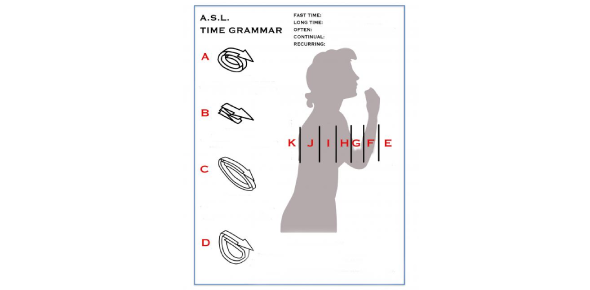
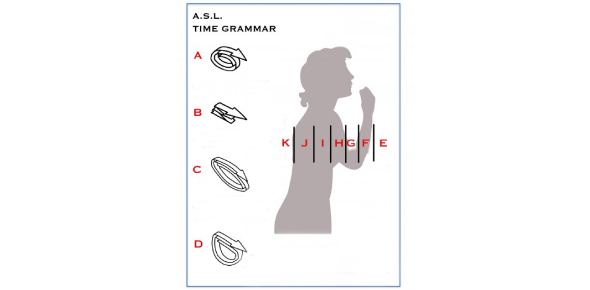
.webp)
.webp)
.webp)
.webp)
.webp)
.webp)
.webp)
.webp)
.webp)
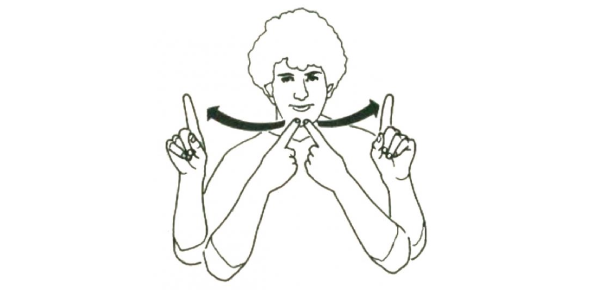
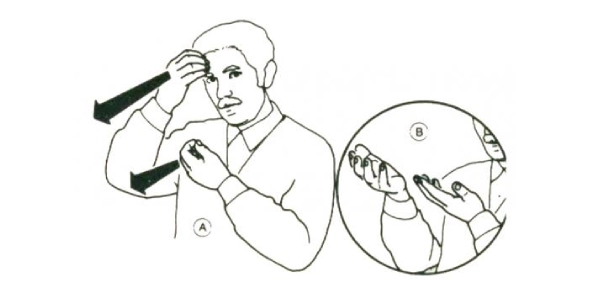
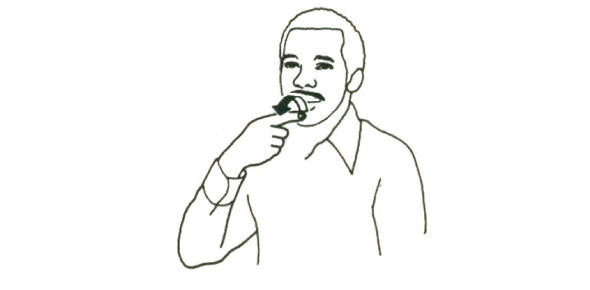
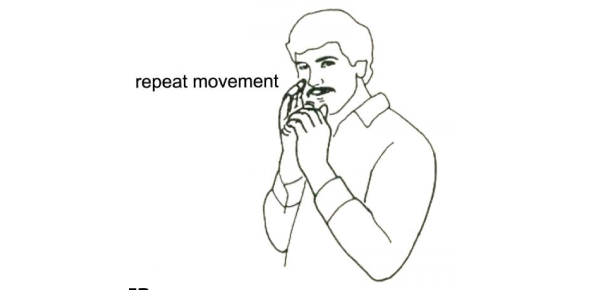
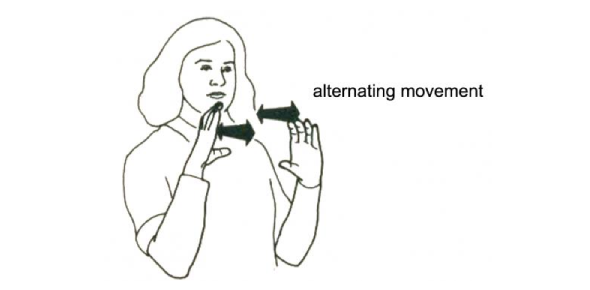
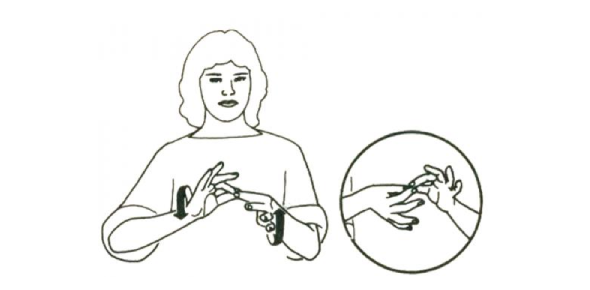
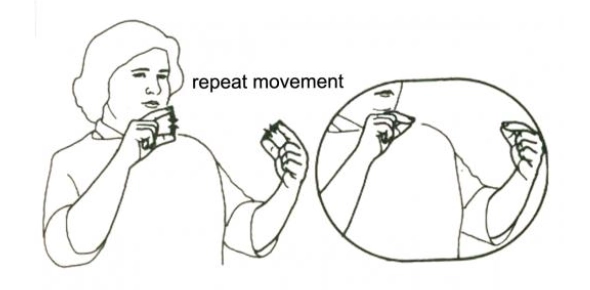
.webp)
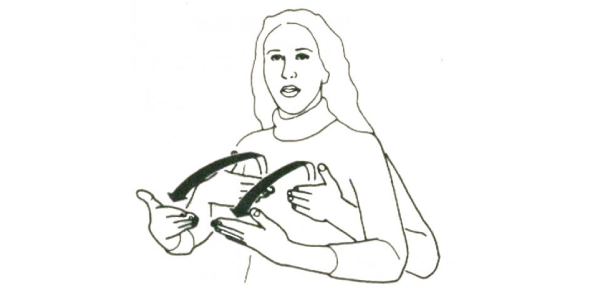
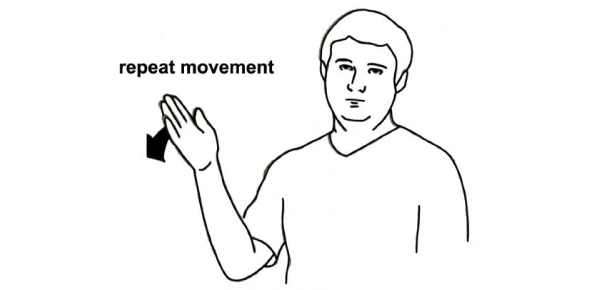
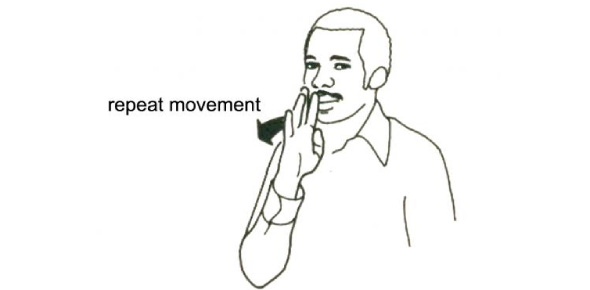

.webp)

.webp)
.webp)
.webp)
.webp)









.webp)
.webp)
.webp)
.webp)
.webp)
.webp)






.webp)
.webp)
.webp)
.webp)
.webp)


.webp)
.webp)

.webp)
.webp)
.webp)
.webp)
.webp)
.webp)
.webp)
.webp)
.webp)
.webp)
.webp)
.webp)
.webp)
.webp)